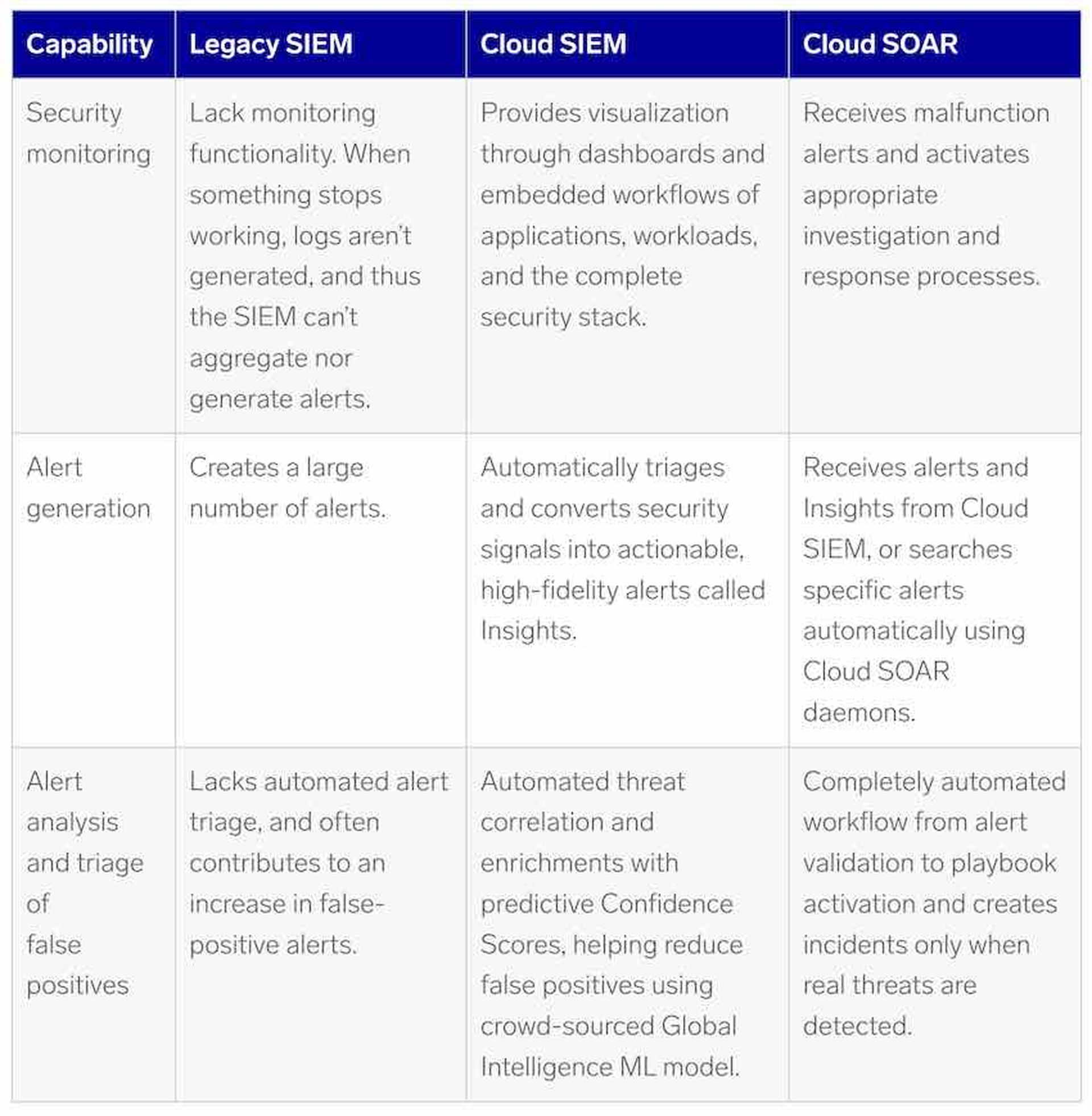A common question we receive is: Should security orchestration, automation and response (SOAR) replace security information and event management (SIEM)? While the two technologies share some common components, they serve different purposes. As security teams look to modernize their security operations center (SOC) to meet the demands of cloud environments, automation is the key priority. To that end, it’s vital to understand the roles of both SIEM and SOAR.
The function and use cases for SIEM
SIEM software tools and products combine the capabilities of security information management (SIM) and security event management (SEM) tools into a comprehensive solution for cybersecurity. Typical functions of a SIEM software tool include:
Principle SIEM use cases are:
The function and use cases for SOAR
SOAR optimizes processes and allows orchestration of different technologies into standardized response procedures for each type of attack, called Standard Operating Procedures (SOPs). It also automates repetitive tasks within these processes and ensures that all analysts follow the same procedures.
SOAR leverages the power of playbooks, machine learning, and progressive automation to enhance threat intelligence and speed up security processes.
SOAR relies on machine learning to predict repeatable patterns to help SOC teams distinguish between false positives and negatives and intercept and approach cyber attacks proactively, rather than reactively.
Recently SOAR use cases have evolved to include:
Security analysts recognize the necessity for cloud-based SOAR, with YoY adoption growing 85%¹. Cloud SOAR addresses critical customer requirements:
SIEM vs. SOAR
Both SIEM and SOAR aggregate security data from various sources, but the locations and quantity of information sourced are different. While SIEM ingests various log and event data from traditional infrastructure component sources, a SOAR pulls in information from external emerging threat intelligence feeds, endpoint security software and other third-party sources to get a better overall picture of the security landscape inside the network and out.
After a SIEM provides an alert, it's up to the administrator to determine the path of an investigation. In contrast, a SOAR automates investigation path workflows to begin triaging and subsequently apply remediation processes. In other words, a SOAR starts from where a SIEM’s capabilities end. In practice, the two are complementary and work best in tandem.
Combining SIEM and SOAR answers these three key questions for SecOps teams to optimize their incident response:
How can I make our SIEM and threat intelligence data actionable and more effectively investigate alerts and incidents?
Given the increase in volume and scale across a growing attack surface, how can I prioritize my response to security incidents?
How can I rapidly respond to security incidents confident that analysts are following defined SOPs?
Statistics show that the dwell time of security incidents can be well over 200 days.
Legacy SIEMs, vs Cloud SIEM and Cloud SOAR

How to choose the right SOAR platform to pair with SIEM
Industry standards dictate that all aspects of the incidents should be managed from a singular platform. Being able to work through each phase of that incident response life cycle inside of your SOAR platform. Here are seven factors that constitute a quality SOAR platform:
- Open integration framework and lateral use cases
- Progressive automation
- Comprehensive incident case management
- SecOps dashboard and War Room
- Role-based KPI dashboards & comprehensive Reporting Library
- Incident detailed reports are automatically created
Modernizing the SOC with Cloud SOAR and Cloud SIEM
The foundation of the modern SOC revolves around automating all time-consuming processes that slow SOC performance. With the amount of data waiting to be ingested by SOCs growing by the day, traditional SOCs can’t rely on manual labor to get the job done efficiently.
Both SIEM and SOAR connect disparate tools and use the aggregated data to provide insightful information to the security team, easing their job in incident detection, investigation, and remediation. Every business, organization, staff, tool and response process is different. That's why flexibility is key. Sumo Logic Cloud SOAR relies on its Open Integration Framework to easily blend within the deployed environment and integrate with different security technologies seamlessly, including SIEM. This allows the cyber team to build and maintain their incident response processes and harmoniously utilize Cloud SOAR and Cloud SIEM.
See how Cloud SOAR can quickly become an integral part of your infrastructure––reach out to us for a free, no-obligation demo.
¹ A SANS 2021 Survey: Security Operations Center (SOC)
By Enrico Benzoni & Dana Torgersen of Sumo Logic. Read more Sumo Logic guest blogs here. Regularly contributed guest blogs are part of MSSP Alert’s sponsorship program.




